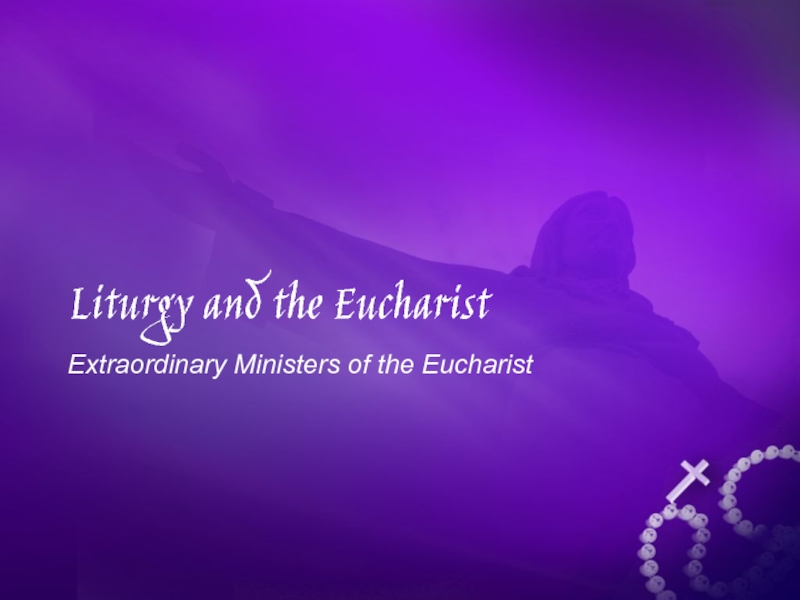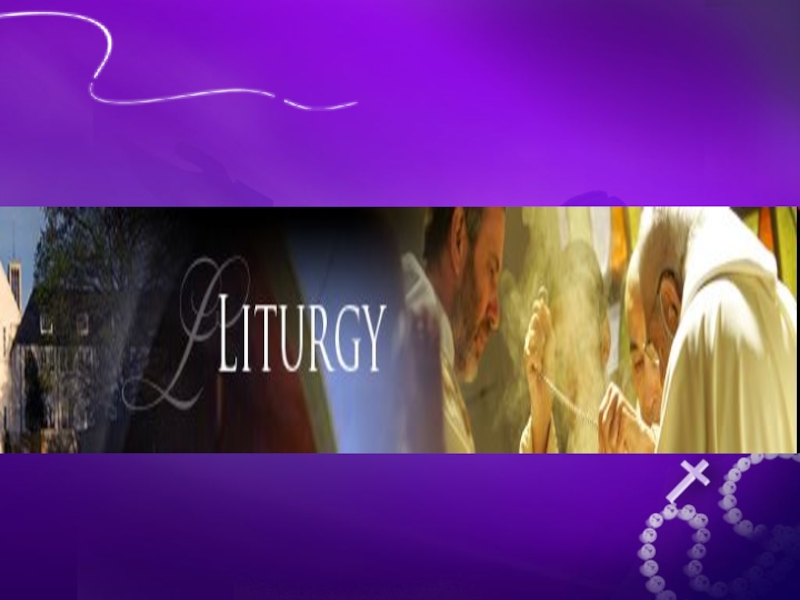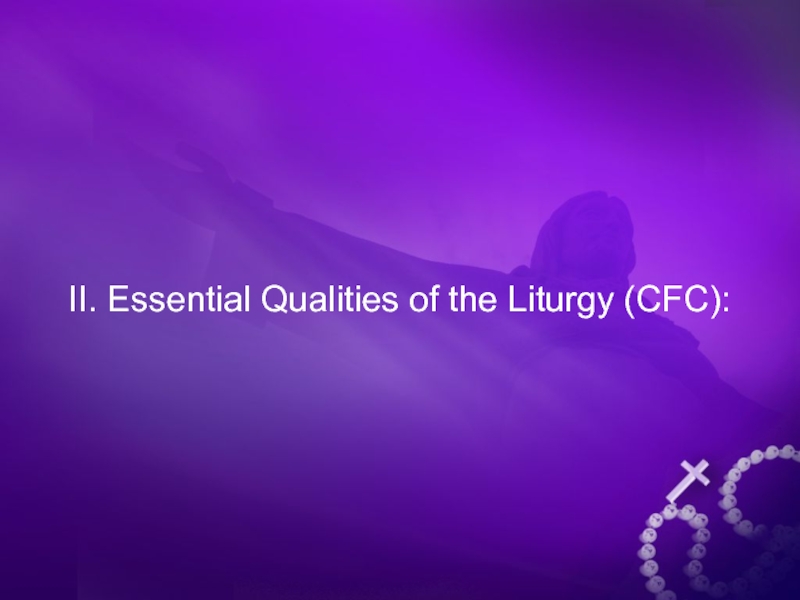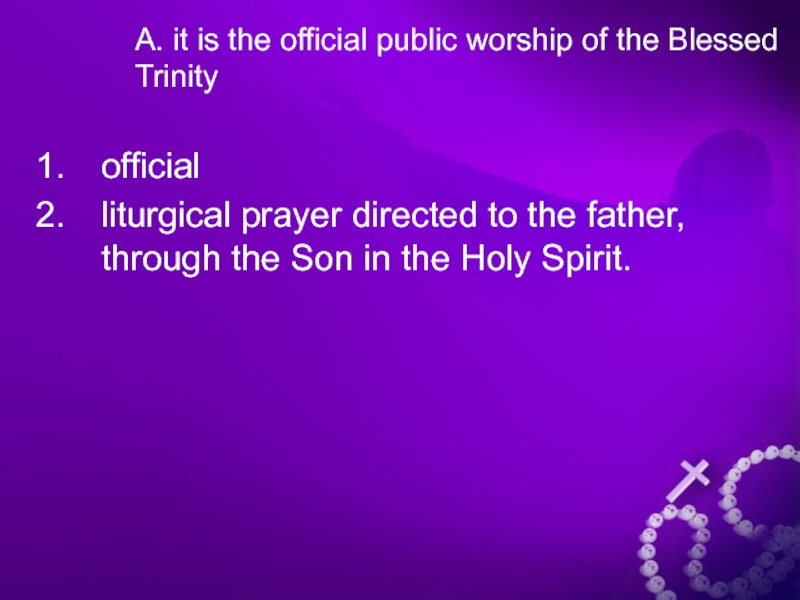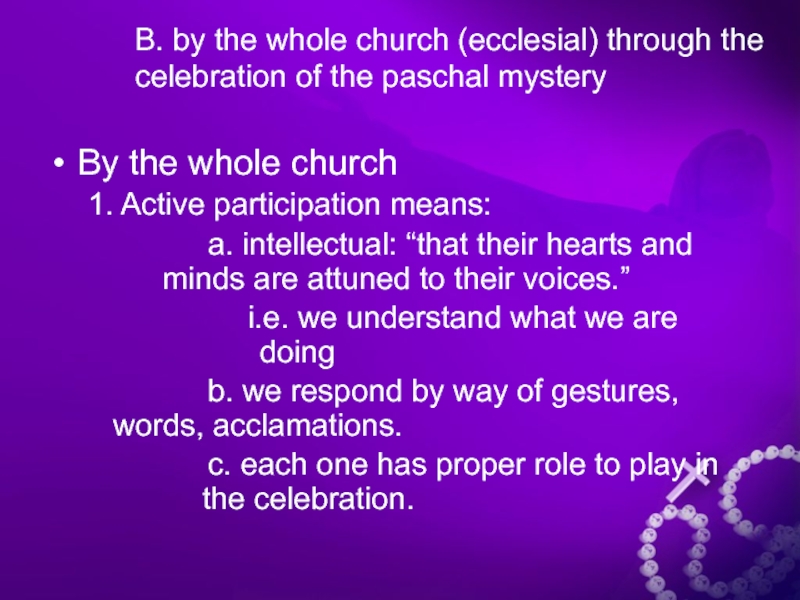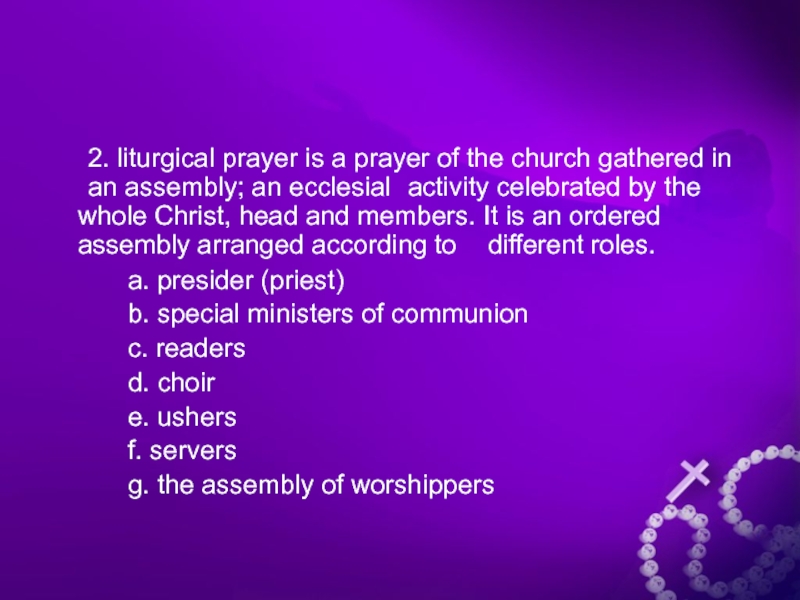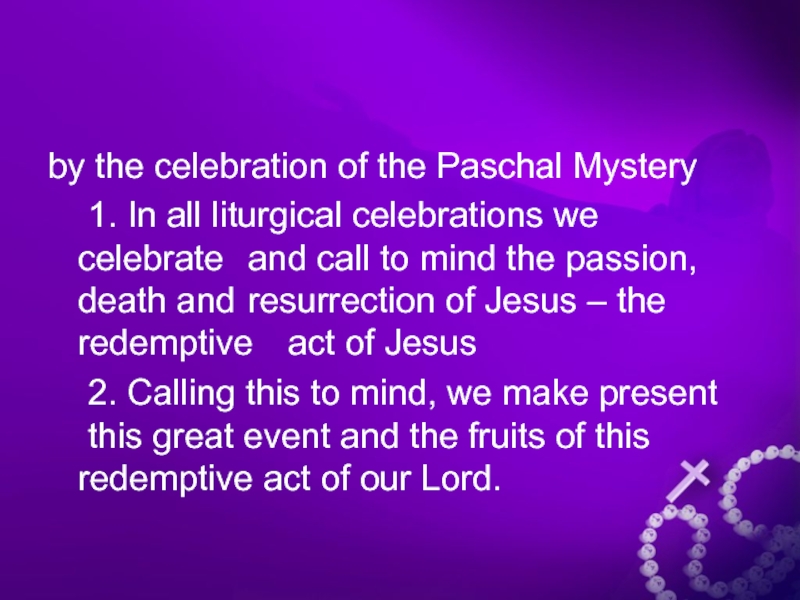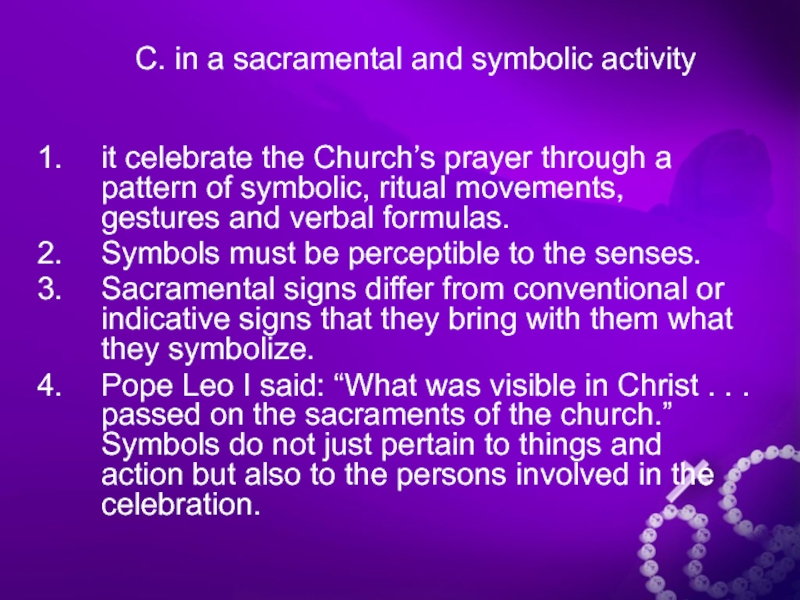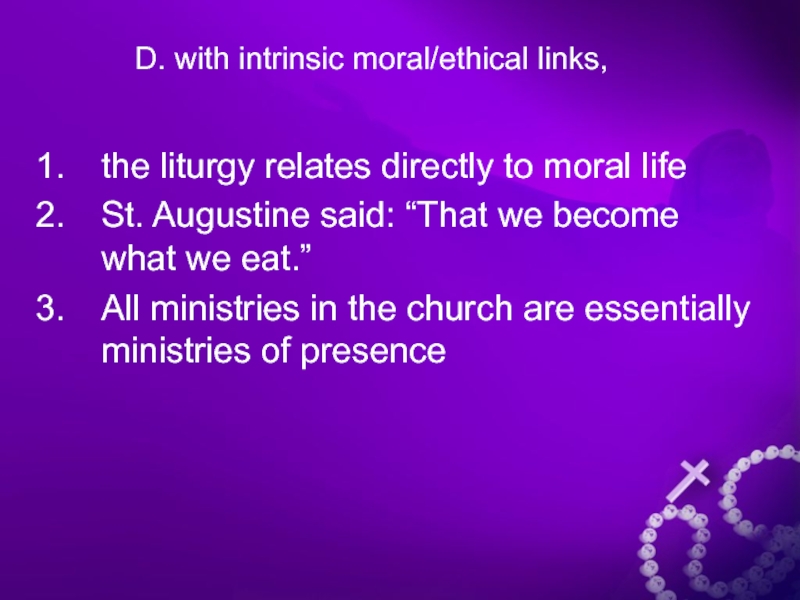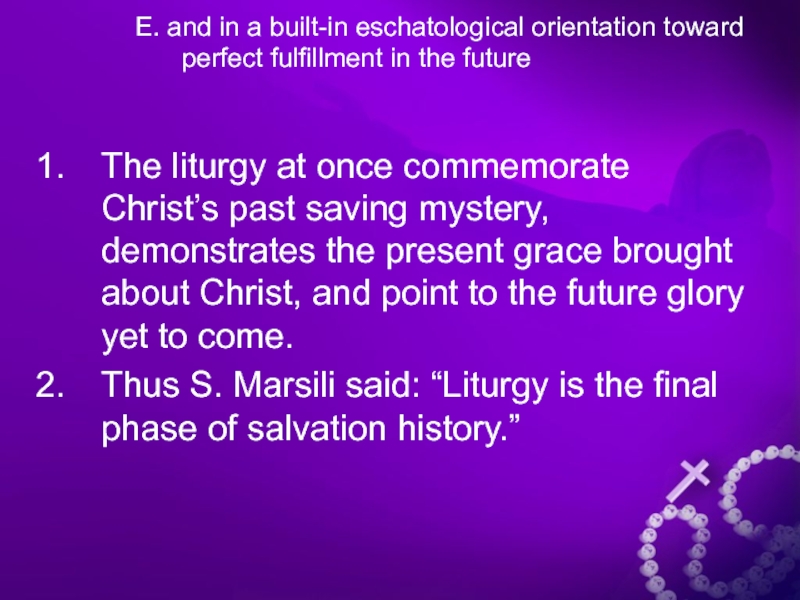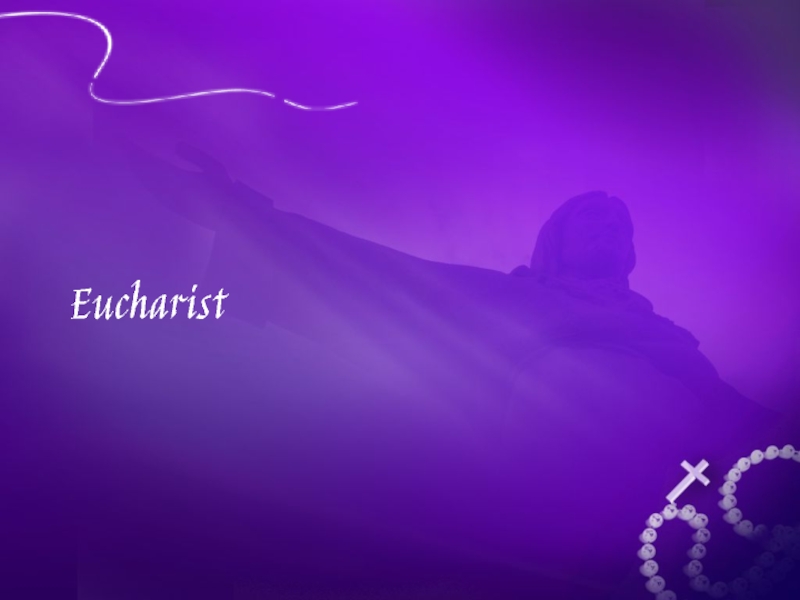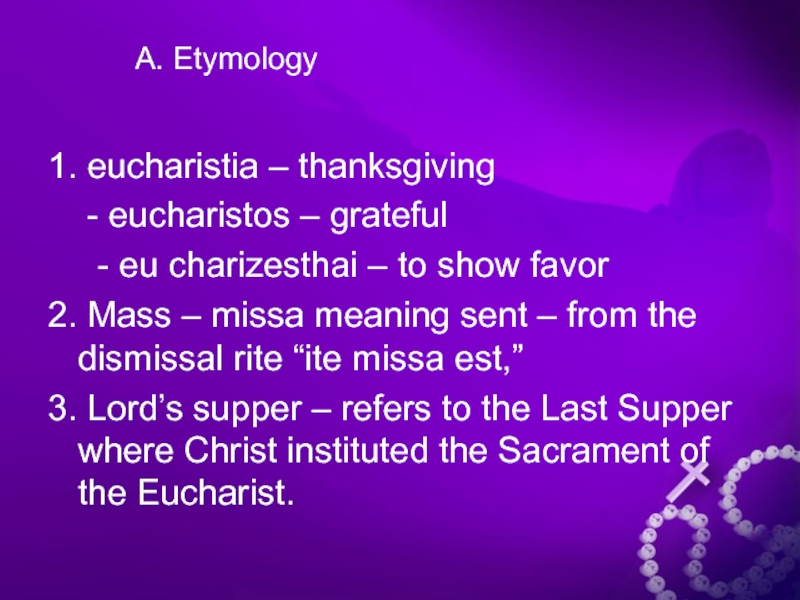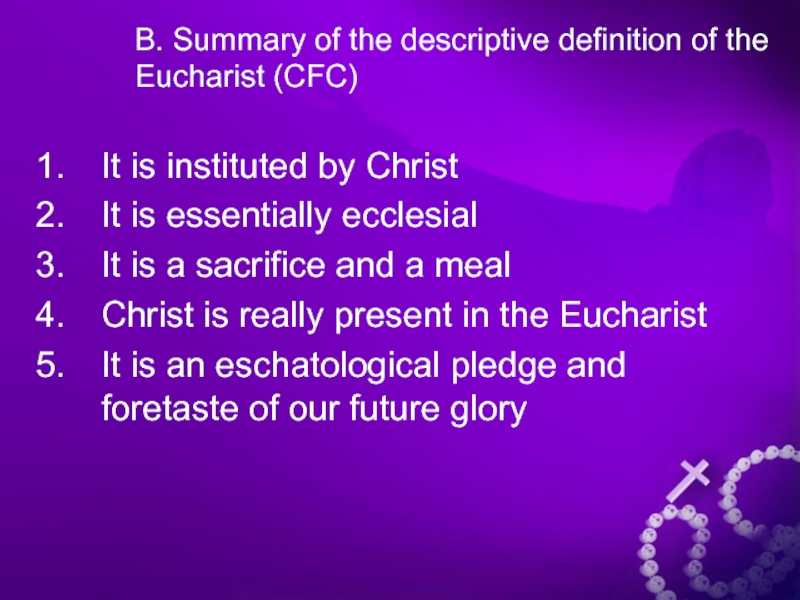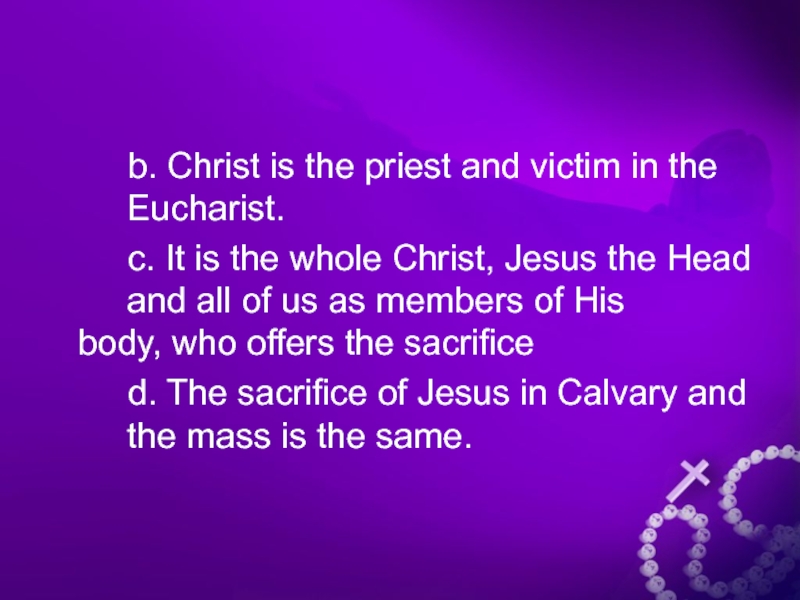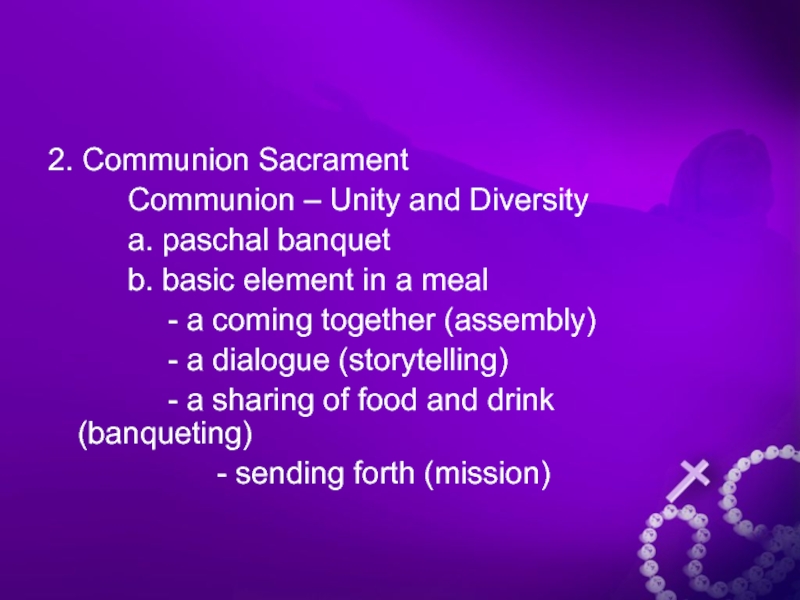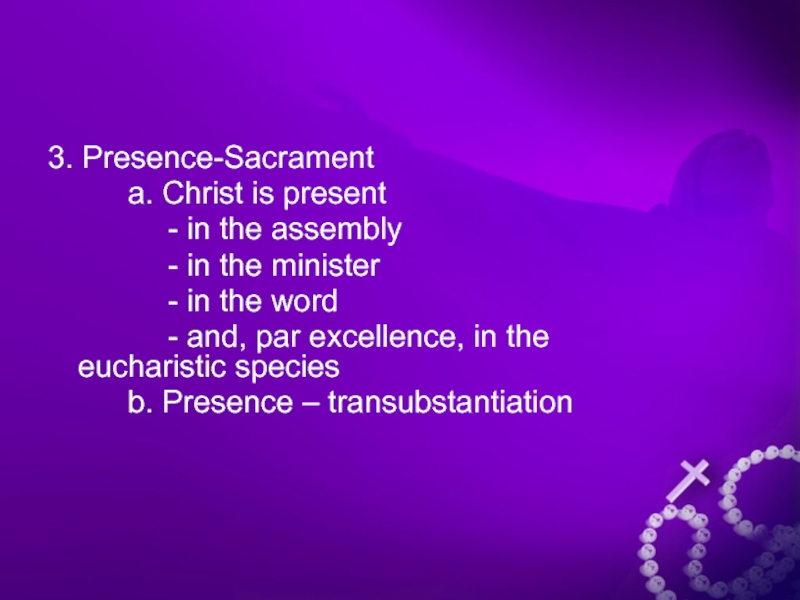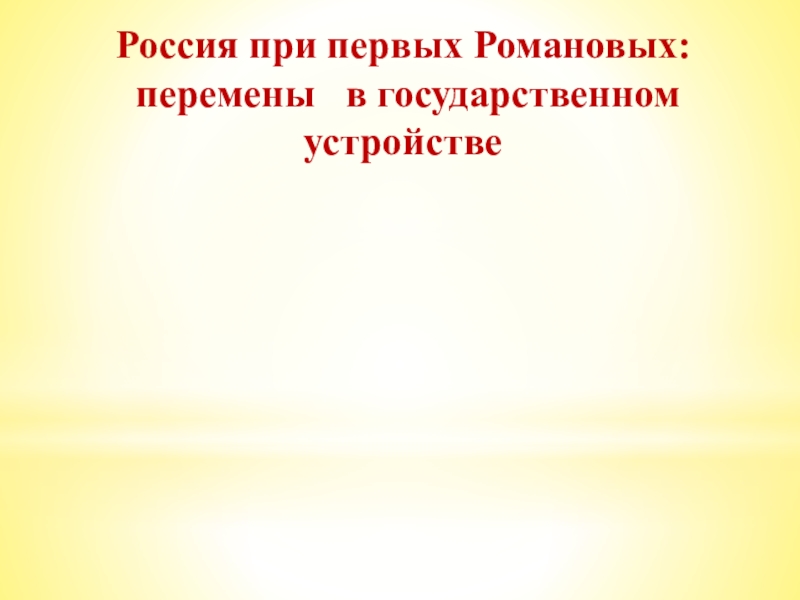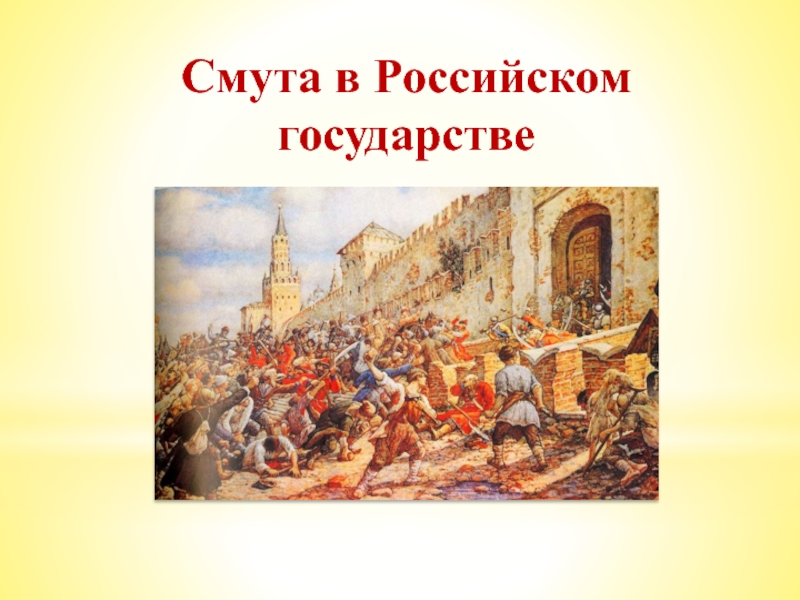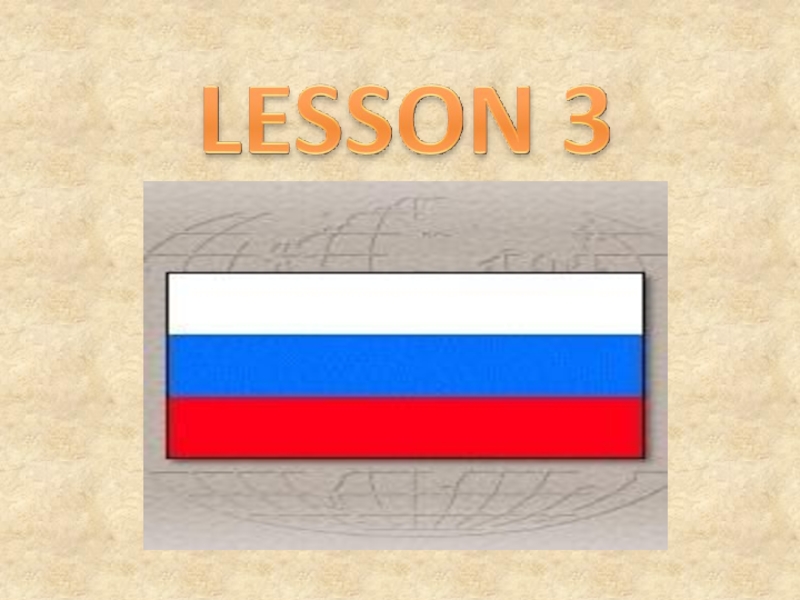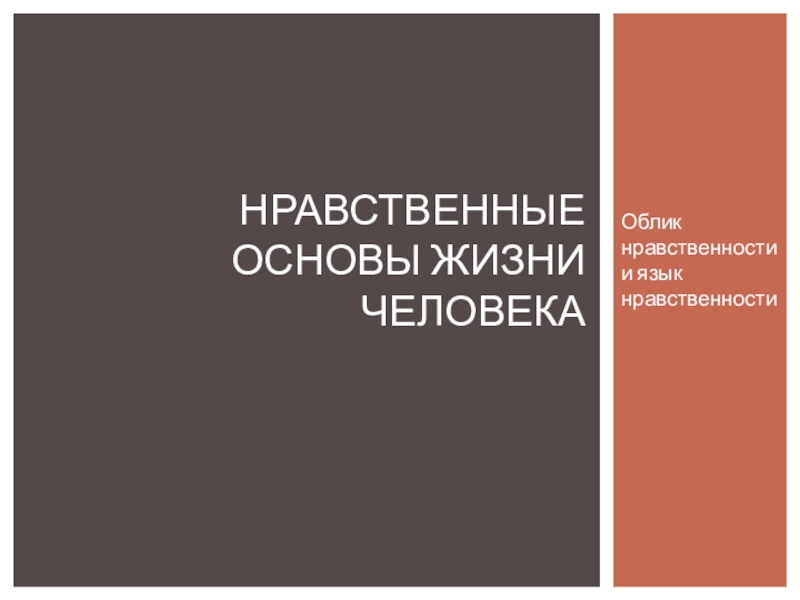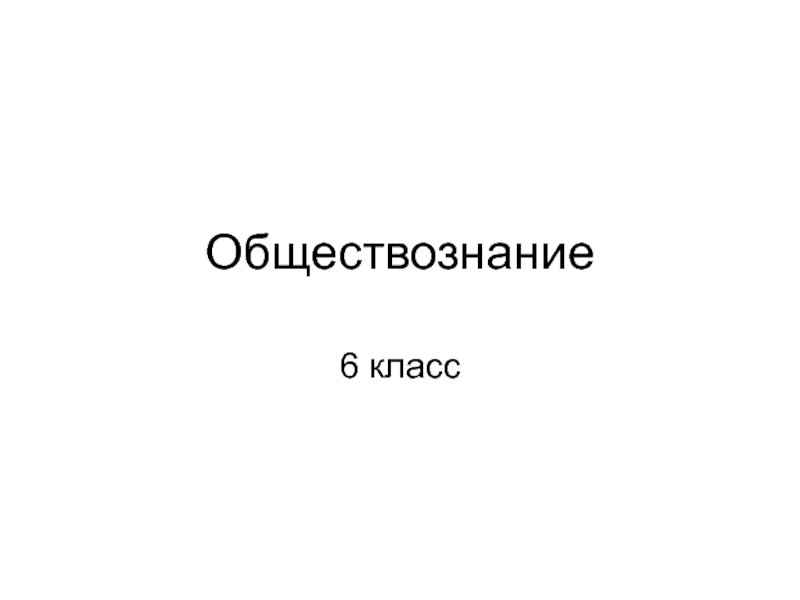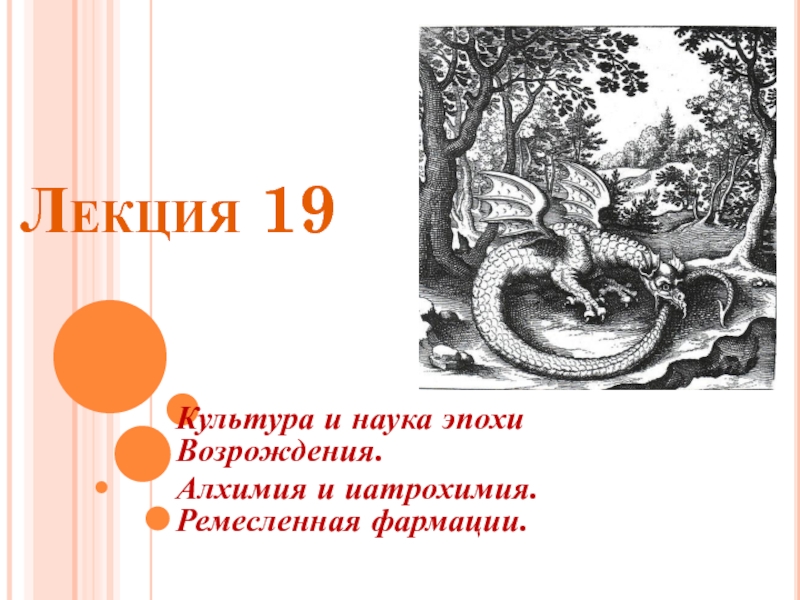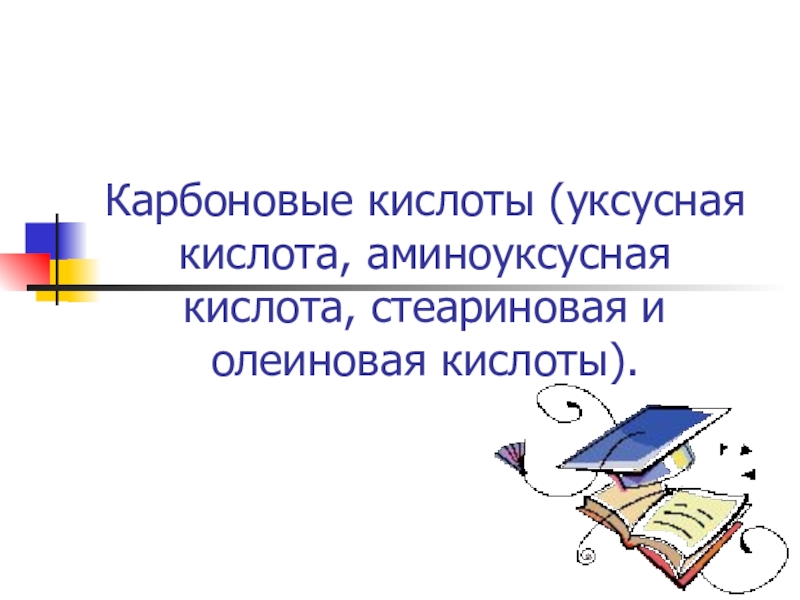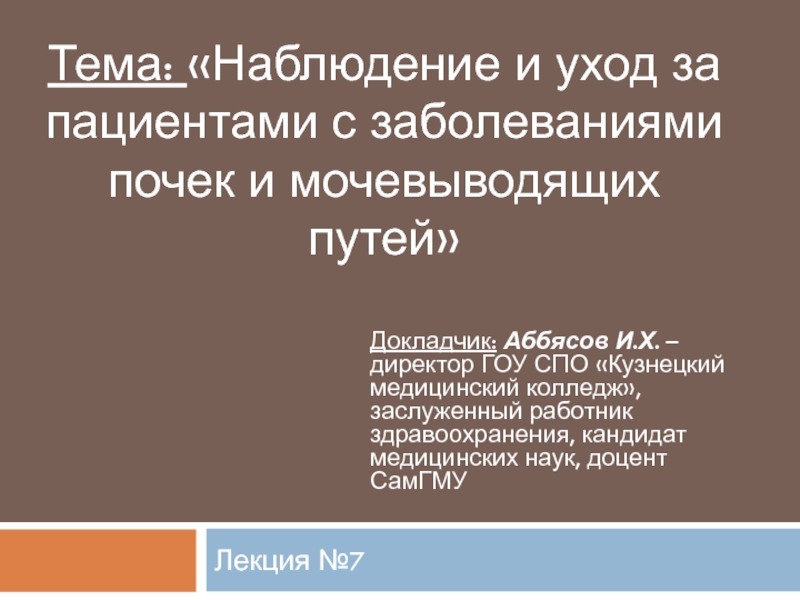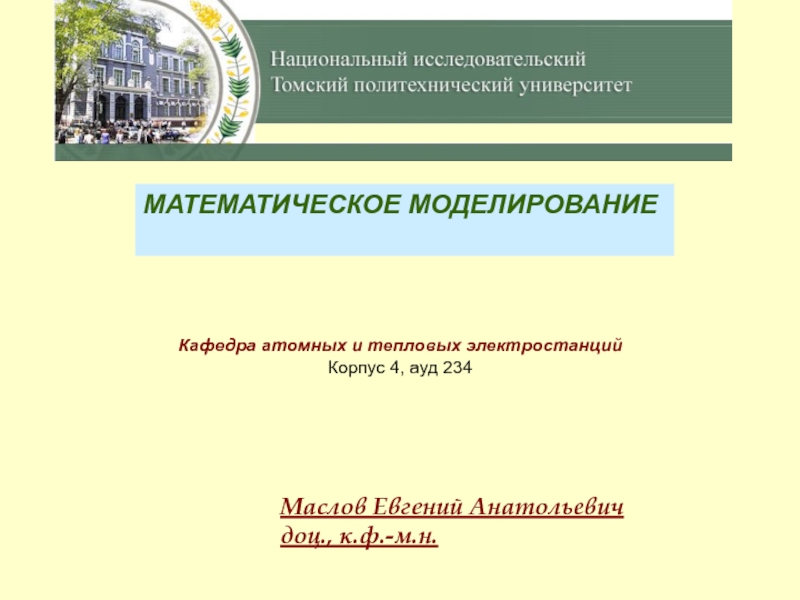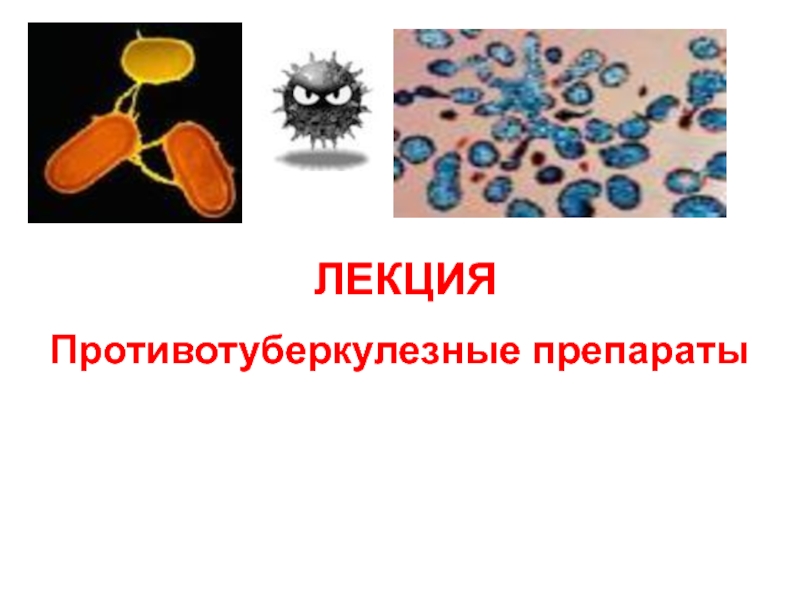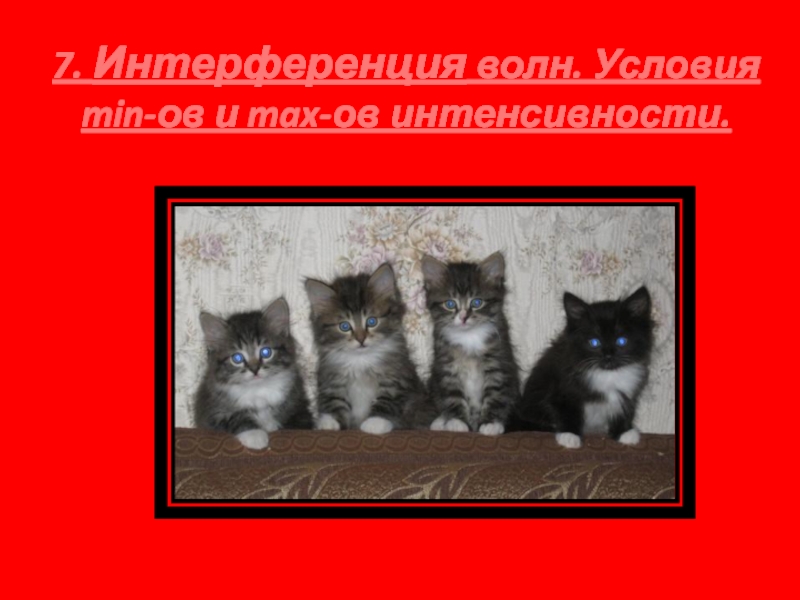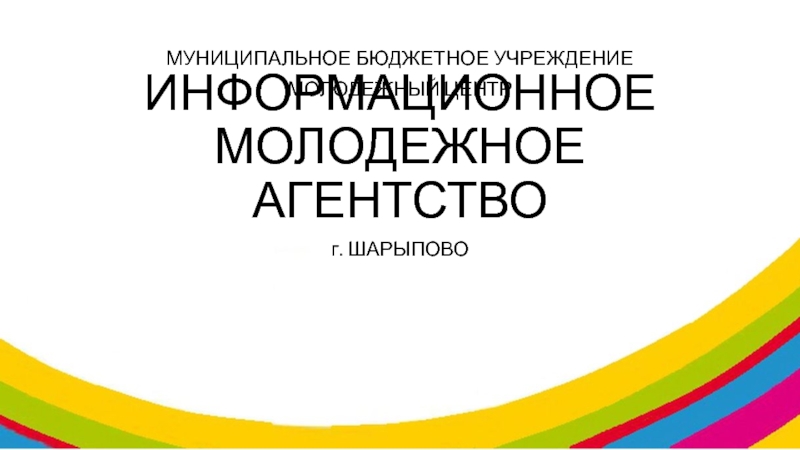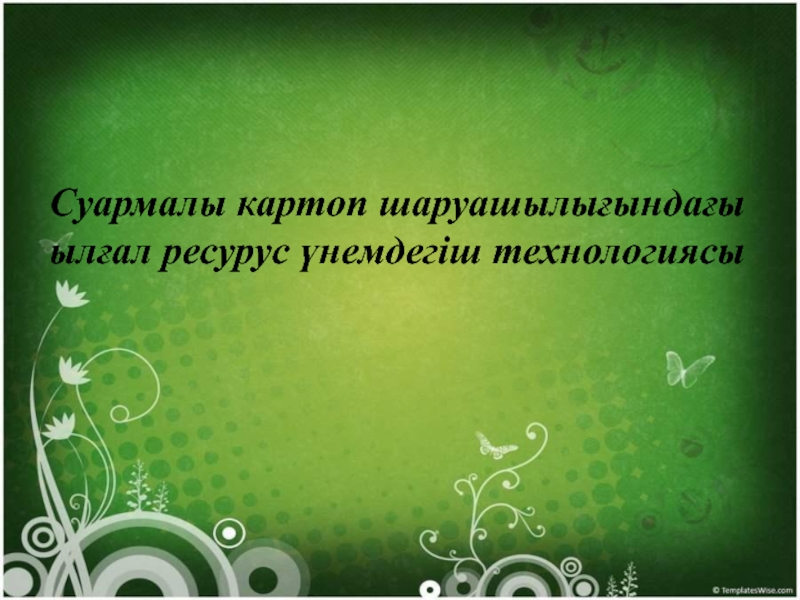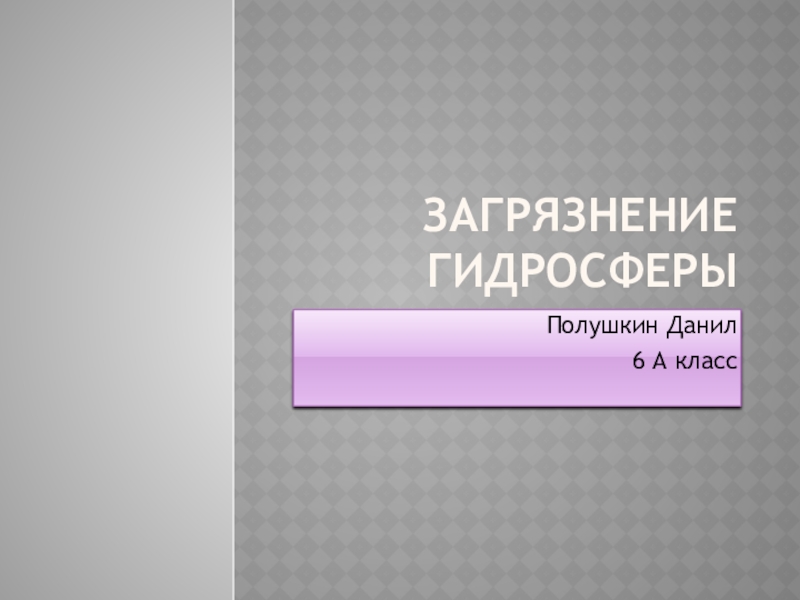Разделы презентаций
- Разное
- Английский язык
- Астрономия
- Алгебра
- Биология
- География
- Геометрия
- Детские презентации
- Информатика
- История
- Литература
- Математика
- Медицина
- Менеджмент
- Музыка
- МХК
- Немецкий язык
- ОБЖ
- Обществознание
- Окружающий мир
- Педагогика
- Русский язык
- Технология
- Физика
- Философия
- Химия
- Шаблоны, картинки для презентаций
- Экология
- Экономика
- Юриспруденция
Liturgy and the Eucharist
Содержание
- 1. Liturgy and the Eucharist
- 2. Liturgy
- 3. I. EtymologyLitos (laos) - peopleergon – work
- 4. II. Essential Qualities of the Liturgy (CFC):
- 5. A. it is the official public worship
- 6. B. by the whole church (ecclesial) through
- 7. 2. liturgical prayer is a prayer of
- 8. by the celebration of the Paschal Mystery 1.
- 9. C. in a sacramental and symbolic activityit
- 10. D. with intrinsic moral/ethical links,the liturgy relates
- 11. E. and in a built-in eschatological orientation
- 12. Eucharist
- 13. A. Etymology1. eucharistia – thanksgiving -
- 14. B. Summary of the descriptive definition of
- 15. C. The Three Dimension of the Eucharist
- 16. b. Christ is the priest and victim
- 17. 2. Communion Sacrament Communion – Unity and Diversity a.
- 18. c. Fruits of Receiving Communion - union with
- 19. 3. Presence-Sacrament a. Christ is present - in the
- 20. 4. The pledge of Future Glory - not
- 21. Скачать презентанцию
Liturgy
Слайды и текст этой презентации
Слайд 6B. by the whole church (ecclesial) through the celebration of
the paschal mystery
By the whole church
1. Active participation means:
a. intellectual:
“that their hearts and minds are attuned to their voices.”i.e. we understand what we are doing
b. we respond by way of gestures, words, acclamations.
c. each one has proper role to play in the celebration.
Слайд 7 2. liturgical prayer is a prayer of the church gathered
in an assembly; an ecclesial activity celebrated by the whole
Christ, head and members. It is an ordered assembly arranged according to different roles.a. presider (priest)
b. special ministers of communion
c. readers
d. choir
e. ushers
f. servers
g. the assembly of worshippers
Слайд 8by the celebration of the Paschal Mystery
1. In all liturgical
celebrations we celebrate and call to mind the passion, death
and resurrection of Jesus – the redemptive act of Jesus2. Calling this to mind, we make present this great event and the fruits of this redemptive act of our Lord.
Слайд 9C. in a sacramental and symbolic activity
it celebrate the Church’s
prayer through a pattern of symbolic, ritual movements, gestures and
verbal formulas.Symbols must be perceptible to the senses.
Sacramental signs differ from conventional or indicative signs that they bring with them what they symbolize.
Pope Leo I said: “What was visible in Christ . . . passed on the sacraments of the church.” Symbols do not just pertain to things and action but also to the persons involved in the celebration.
Слайд 10D. with intrinsic moral/ethical links,
the liturgy relates directly to moral
life
St. Augustine said: “That we become what we eat.”
All
ministries in the church are essentially ministries of presenceСлайд 11E. and in a built-in eschatological orientation toward perfect fulfillment
in the future
The liturgy at once commemorate Christ’s past saving
mystery, demonstrates the present grace brought about Christ, and point to the future glory yet to come.Thus S. Marsili said: “Liturgy is the final phase of salvation history.”
Слайд 13A. Etymology
1. eucharistia – thanksgiving
- eucharistos – grateful
- eu charizesthai – to show favor
2. Mass – missa
meaning sent – from the dismissal rite “ite missa est,”3. Lord’s supper – refers to the Last Supper where Christ instituted the Sacrament of the Eucharist.
Слайд 14B. Summary of the descriptive definition of the Eucharist (CFC)
It is instituted by Christ
It is essentially ecclesial
It is a
sacrifice and a mealChrist is really present in the Eucharist
It is an eschatological pledge and foretaste of our future glory
Слайд 15C. The Three Dimension of the Eucharist (CFC)
Sacrifice – Sacrament
Sacrifice
expresses suffering for the sake of the other, a self-denial
and humility.a. the Eucharist is sacrifice because:
- Christ is present as “offering himself for us as a sacrifice to the Father”
- it is memorial of his sacrifice
Слайд 16 b. Christ is the priest and victim in the
Eucharist.
c. It is the whole Christ, Jesus the Head
and all of us as members of His body, who offers the sacrificed. The sacrifice of Jesus in Calvary and the mass is the same.
Слайд 172. Communion Sacrament
Communion – Unity and Diversity
a. paschal banquet
b. basic
element in a meal
- a coming together (assembly)
- a dialogue
(storytelling)- a sharing of food and drink (banqueting)
- sending forth (mission)
Слайд 18 c. Fruits of Receiving Communion
- union with Christ
- liberation from
sin
- reconciliation
- it builds the community the, church
- PCP
II calls it “the primary source of renewal and the center of the community.”- there is no Eucharist where there is no church.
Слайд 193. Presence-Sacrament
a. Christ is present
- in the assembly
- in the
minister
- in the word
- and, par excellence, in the
eucharistic speciesb. Presence – transubstantiation
Слайд 204. The pledge of Future Glory
- not just a memorial
and not just a present means for grace but
also an eschatological meal.a. it is the pledge of our own resurrection and new life “for he who eats of my flesh and drinks my blood will have eternal life.”
b. it is food for the journey (viaticum)
c. and a foretaste of the heavenly banquet
